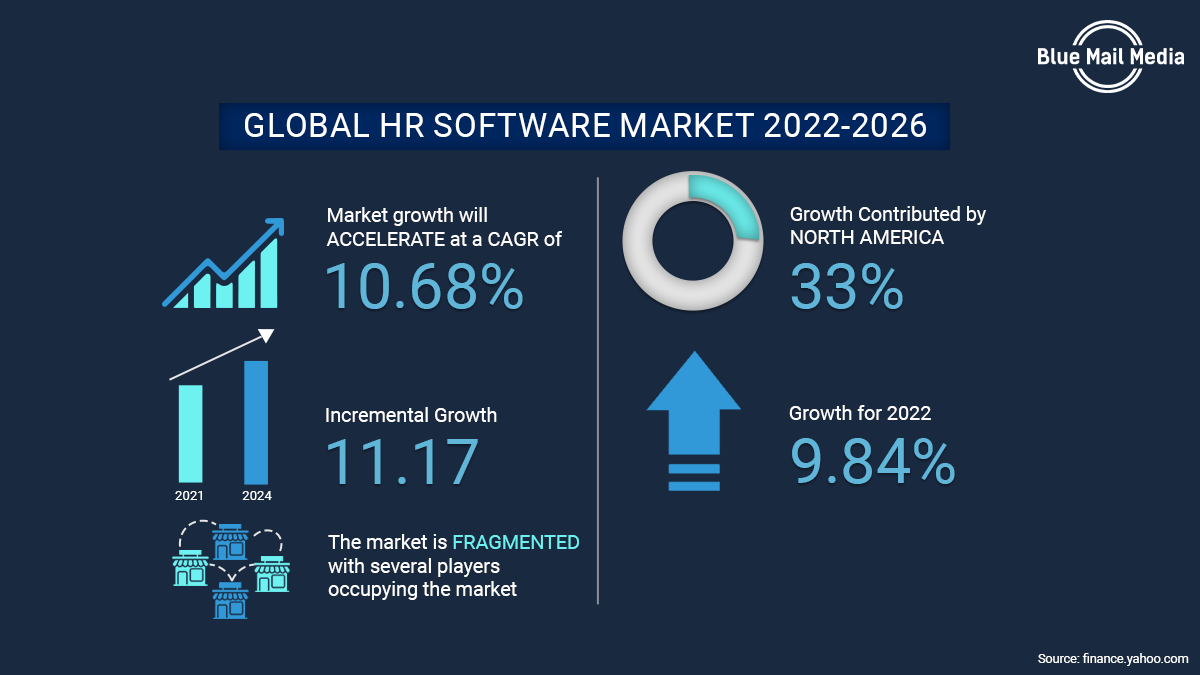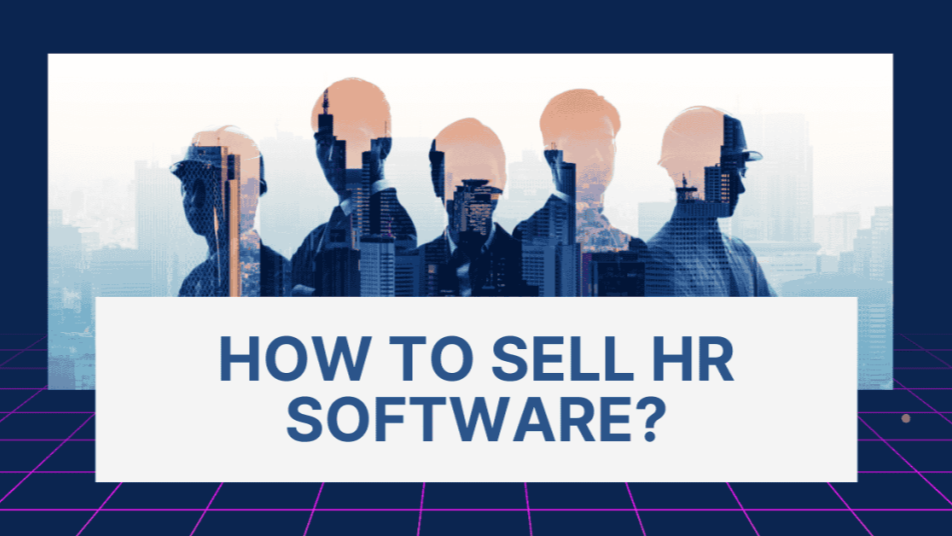Selling HR software effectively starts with understanding your target market. Knowing what HR professionals need and how your software meets those needs is key.
HR software helps manage recruitment, employee data, benefits, and performance. Companies are looking for solutions to streamline these processes. To sell HR software, you must highlight its benefits and show how it addresses specific problems. This means demonstrating ease of use, cost-effectiveness, and integration capabilities.
Prospective buyers need to see a clear return on investment. By focusing on these aspects, you can better connect with potential clients and close sales. Ready to learn how? Let’s dive in.
Identifying Target Market
Identifying your target market is crucial for selling HR software effectively. Understanding who benefits most from your product helps tailor your marketing strategy. This section will help you break down your target audience.
Industry Segmentation
Segmenting by industry helps identify specific needs. Different sectors have unique HR challenges. For example, healthcare requires robust compliance features. Tech companies may seek integrations with other software. Retail might need flexible scheduling options.
Understanding these differences allows you to customize your pitch. Industry-specific solutions resonate more with potential clients. This makes your software more appealing.
Key Decision Makers
Identify the decision makers within a company. Usually, HR managers or directors lead the decision-making process. They understand the day-to-day HR needs. Sometimes, CEOs or CFOs also play a role. They focus on the software’s ROI and long-term benefits.
Tailor your message to address their concerns. HR managers care about usability and features. Executives look at cost-effectiveness and efficiency. Knowing this helps you craft a more effective sales pitch.
Understanding Customer Needs
Knowing your customer is key to selling HR software. You need to understand their needs and challenges. This helps in tailoring your product to meet their requirements. Engaging with customers and gathering their feedback is crucial.
Conducting Surveys
Surveys are a great way to gather customer insights. Create simple, clear questions. Ask about their current HR processes and tools. Learn what they find difficult or time-consuming. This data will help you understand their needs better.
Analyzing Pain Points
Once you have survey data, identify common issues. Look for patterns in the responses. These pain points reveal where your software can help. Highlight these in your sales pitch. Show how your HR software solves these specific problems.
Creating A Unique Value Proposition
Creating a unique value proposition is crucial for selling HR software. It helps potential customers understand why your software stands out. A clear value proposition can make your software more attractive. This section will guide you through defining unique features and explaining the benefits to customers.
Defining Unique Features
Identify what makes your HR software special. Does it offer advanced analytics? Highlight these unique features. They set your product apart from competitors. Focus on what users will find valuable. Perhaps it integrates with popular tools. Maybe it has a user-friendly interface. List these features clearly. Potential customers need to see why your software is the best choice.
Benefits To Customers
Explain how your HR software benefits users. Will it save them time? Highlight this. Time-saving features are always appealing. Does it improve employee satisfaction? Make this clear. Happy employees lead to better productivity. Will it simplify HR tasks? Stress this point. Simplifying tasks reduces stress and errors. Focus on tangible benefits. Customers want to know how the software will improve their work life.

Credit: www.close.com
Building A Strong Sales Team
Building a strong sales team is crucial when you aim to successfully sell HR software. The right team can turn potential leads into loyal customers and significantly boost your revenue. But how do you create this dream team?
Recruiting Talent
First, focus on recruiting the right talent. Start by identifying the key qualities you need in your sales team. Look for individuals who are not only skilled but also passionate about HR solutions.
Consider their past experiences. Have they sold software before? Do they understand the complexities of HR? Conduct thorough interviews and practical tests to gauge their abilities.
Don’t just look at resumes. Sometimes the best salespeople come from diverse backgrounds. They might bring unique perspectives that can be incredibly valuable.
Training Programs
Once you’ve recruited your team, invest in robust training programs. These programs should cover everything from the basics of your HR software to advanced selling techniques.
Offer hands-on training sessions. Let your sales team use the software themselves. The more familiar they are with it, the better they can sell it.
Regularly update your training materials. Technology and market trends change rapidly. Keeping your team updated ensures they can tackle any new challenges that arise.
Engage them with role-playing exercises. This helps them prepare for real-life scenarios. It’s a great way to build confidence and improve their sales pitch.
Lastly, encourage continuous learning. Provide access to webinars, workshops, and other learning resources. This will keep your team motivated and knowledgeable.
How do you ensure your sales team stays motivated and on top of their game? Share your thoughts in the comments below!
Effective Lead Generation
Effective lead generation is essential for selling HR software. It involves attracting, nurturing, and converting potential customers into leads. Understanding different strategies can help you target the right audience and boost sales. Below, we will explore some effective methods for generating leads.
Inbound Marketing
Inbound marketing focuses on attracting leads through valuable content and experiences. Start by creating a blog with helpful HR-related content. Use keywords that your target audience searches for. Share tips, guides, and industry updates to establish your brand as an expert.
Optimize your website for search engines. This ensures that your content ranks high in search results. Use clear, concise language and include relevant keywords. Offering free resources like eBooks or webinars can also attract leads. People are more likely to provide their contact information in exchange for useful content.
Outbound Strategies
Outbound strategies involve reaching out to potential customers directly. Cold emailing is one effective method. Create a list of HR managers or business owners who might need your software. Craft personalized emails that address their specific pain points.
Another approach is cold calling. Prepare a script that highlights the benefits of your HR software. Focus on solving their problems and improving their processes. Attend industry events and trade shows to network with potential clients. Hand out business cards and demo your software.

Credit: www.bluemailmedia.com
Implementing A Crm System
Implementing a CRM system can be a game-changer when selling HR software. It helps you manage your customer relationships and streamlines your sales process. But how do you choose the right CRM and integrate it seamlessly with your sales strategy?
Choosing The Right Crm
Picking the right CRM can be daunting. Start by identifying your specific needs. Do you need robust reporting features, or is ease of use more critical?
Compare different CRM platforms. Look at reviews, ask for demos, and talk to current users. Their insights can be invaluable.
Consider your budget. While some CRMs offer extensive features, they may come with a hefty price tag. Balance cost with functionality.
Integrating With Sales Process
Once you’ve chosen a CRM, the next step is integration. Your CRM should align with your existing sales process, not disrupt it.
Train your sales team thoroughly. A CRM is only as good as the people using it. Ensure everyone knows how to use the new system.
Monitor the integration closely. Are there any hiccups? Address issues quickly to maintain momentum.
Have you ever implemented a CRM system that didn’t quite fit your needs? Share your story in the comments below. Your experience might help someone else make a better choice.
Leveraging Social Proof
Leveraging social proof is a powerful strategy to sell HR software. People naturally trust the experiences and opinions of others. By showcasing real-life success stories and satisfied customers, you can significantly influence potential buyers.
Case Studies
Case studies are detailed accounts of how your HR software has benefited other companies. They provide concrete examples and data that highlight the software’s effectiveness. This allows potential customers to see themselves in those success stories.
For instance, create a case study about a client who reduced their hiring time by 50% using your software. Include specific numbers and quotes from the client to add credibility. This not only tells a story but also demonstrates the tangible benefits of your product.
Have you ever read a case study and thought, “That could be my company”? That’s the power of a well-crafted case study. It provides a narrative that your potential customers can relate to and envision similar success.
Customer Testimonials
Customer testimonials are short, positive reviews from satisfied clients. These are often more relatable because they come from real people who have used your software. A few sentences from a happy customer can be very persuasive.
Consider adding a testimonial from an HR manager who praises your software for its user-friendly interface. You can also include a quote from a CEO who talks about the overall improvement in employee engagement. These testimonials build trust and add a personal touch.
When was the last time you bought something based on a friend’s recommendation? That’s the kind of impact customer testimonials can have. They serve as a word-of-mouth endorsement that can tip the scale in your favor.
Don’t underestimate the power of social proof. It can be the nudge that turns a potential customer into a loyal client. What are you waiting for? Start gathering those case studies and testimonials today!
Optimizing Sales Funnel
Boosting your HR software sales involves optimizing the sales funnel. Highlight key features and benefits to attract potential clients. Offer free trials to build trust and showcase the software’s value.
Selling HR software can be a challenging task, but optimizing your sales funnel can make a significant difference. By focusing on lead nurturing and conversion rate optimization, you can streamline the sales process and increase your chances of closing deals. Let’s dive into some practical and actionable insights that can help you enhance your sales funnel.Lead Nurturing
Lead nurturing is crucial in moving potential clients through your sales funnel. It’s about building relationships and providing value. Consistent engagement keeps your HR software top-of-mind. Start by segmenting your leads based on their interests and behaviors. Use email marketing to send targeted content. Share case studies that demonstrate the impact of your software. Don’t forget to leverage social media. Regular updates and interactions can build trust and showcase your expertise.Conversion Rate Optimization
Conversion rate optimization is about turning prospects into customers. It’s essential to analyze and improve each step of your sales funnel. First, ensure your website is user-friendly. A clean, intuitive design can make navigation easier. Highlight the benefits of your HR software clearly. Use A/B testing to determine which elements of your site are most effective. Test different headlines, call-to-actions, and layouts. Small changes can lead to significant improvements in your conversion rates. Have you ever visited a website and felt overwhelmed by too much information? Simplify your content. Focus on the key benefits and how your software solves problems. Now it’s your turn: What strategies have you found effective in nurturing leads? What challenges do you face in converting them into customers? Share your thoughts and let’s discuss actionable solutions.
Credit: theygotacquired.com
Frequently Asked Questions
How To Sell Hr Tech?
Identify target audience and their needs. Showcase product benefits and features. Offer demos and free trials. Provide excellent customer support. Use testimonials and case studies to build trust.
How Much Does Hr Software Cost?
HR software costs vary widely, ranging from $5 to $15 per user per month. Prices depend on features and company size.
How To Sell Hr Solutions?
Identify target businesses and their HR needs. Offer customized HR solutions. Highlight key benefits. Provide case studies and testimonials. Implement a seamless onboarding process.
How To Sell Hr Outsourcing Services?
Understand client needs, highlight benefits, present case studies, offer flexible pricing, and ensure excellent customer service. Effective marketing boosts visibility.
Conclusion
Selling HR software requires clear communication and understanding customer needs. Focus on benefits and solutions. Build strong relationships with clients. Provide excellent support and training. Keep improving your software based on feedback. Stay updated with industry trends. Effective marketing strategies will drive sales.
Remember, patience and persistence are key. Success comes with continuous effort. Happy selling!

